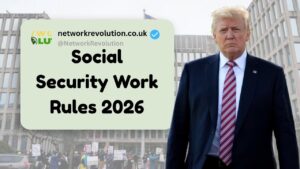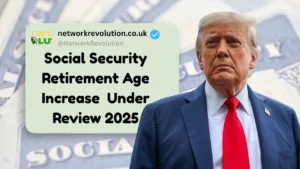Rising inflation and new U.S. tariff policies have made everyday living more expensive. From electronics to groceries, consumers have seen sharp price increases since 2024 due to higher import duties.

To help offset these added costs, Congress is considering a new financial relief plan — the $600 Tariff Rebate Checks. While this proposal isn’t law yet, it’s generating a lot of discussion among working Americans looking for relief.
Here’s everything you need to know — including who might qualify, when payments could arrive, and how to use the money wisely if the plan passes.

What Are the $600 Tariff Rebate Checks?
In July 2025, Senator Josh Hawley (R–Missouri) introduced the American Worker Rebate Act.
The idea is simple: use increased tariff revenue (money collected from import taxes) to send direct rebate checks to American households.

Key proposal highlights:
- $600 per adult
- $600 per dependent child
- Paid directly into bank accounts through the IRS (similar to previous stimulus checks)

Example
A family with two adults and two children would receive:
$600 × 4 = $2,400 total

That money could help cover the higher costs of daily living caused by new tariffs on imported goods.
Who Will Be Eligible?
Eligibility for the Tariff Rebate Checks would likely mirror past stimulus check programs, focusing on middle- and lower-income households.
1. Income Limits
To receive the full payment:
- Single Filers: up to $75,000
- Head of Household: up to $112,500
- Married Filing Jointly: up to $150,000
Payments would gradually phase out above these income thresholds.
2. Dependent Children
Each child under 17 years old could add another $600 to the family’s payment.
3. Tax Filing Requirement
You must file a 2023 or 2024 federal tax return to qualify.
The IRS may introduce a simplified form for non-filers, similar to previous stimulus programs.
4. Citizenship Status
- Must have a valid Social Security Number (SSN)
- Must be a U.S. citizen or lawful permanent resident
Will the Bill Actually Pass?
At the moment, the proposal faces significant political hurdles.
Challenges:
- Some Republican senators oppose the plan, citing budget concerns.
- Economists are divided — some argue rebates could worsen inflation.
- Democrats may prefer different approaches to addressing rising prices.
Likelihood of Passage:
As of November 2025, the bill remains in the Senate Finance Committee with no confirmed vote date.
Experts say chances are slim, but rising inflation and public pressure could revive momentum in 2026.
$600 Rebate Check Payment Dates
Because the bill hasn’t yet passed, no official payment schedule exists.
However, if approved, here’s a realistic timeline based on past IRS relief rollouts:
| Stage | Estimated Timeframe |
|---|---|
| Bill Passed by Congress | Mid-2026 (possible) |
| IRS Setup Period | 3–4 months after passage |
| First Payments Sent | Late 2026 (best estimate) |
Important: Any website or social post claiming “exact payment dates” for 2025 is not accurate. Always verify information directly with IRS.gov or Treasury.gov.
Smart Ways to Use Your $600 (If It Passes)
If you’re fortunate enough to receive this money, here are two financially smart moves:
1. Pay Off High-Interest Debt
Let’s say you have $1,000 in credit card debt at 22% interest.
By applying your $600 rebate:
- Your debt drops to $400
- You save around $470 in interest
- You pay it off nearly 2 years sooner
That’s a guaranteed return on your money.
2. Build Your Savings
If you’re debt-free, consider putting the rebate into a:
- High-Yield Savings Account (HYSA) or
- Money Market Account (MMA)
With rates near 4–5% APY, your money grows safely while remaining accessible in emergencies.
The Purpose Behind the Tariff Rebate Checks
The main goals of the $600 rebate plan are:
- To compensate consumers for rising prices due to tariffs
- To support domestic demand and spending
- To stabilize household finances under inflationary pressure
- To ensure economic momentum continues through consumer relief
In short: the government aims to keep the economy moving — even as trade policies shift.
Will Americans Actually Receive the $600 Checks?
Here’s where things stand:
| Step | Status |
|---|---|
| Bill introduced (July 2025) | Completed |
| Referred to Senate Finance Committee | Yes |
| Passed Senate & House | No |
| Presidential approval | No |
| IRS payment schedule | Not yet created |
So while the proposal exists, no funds are currently being distributed.
Final Thoughts: Hope for Relief, But Not Yet Reality
The $600 Tariff Rebate Checks offer hope for millions of Americans struggling with higher prices. If passed, the plan could provide meaningful relief — especially for families and low- to middle-income earners.
But as of now:
- No law has passed
- No payments have been scheduled
- Updates depend on Congressional action
Until then, stay financially prepared:
- Track official updates via IRS.gov
- Avoid misinformation online
- Use this time to reduce debt and build savings
If the proposal does pass, you’ll be ready to make the most of that $600.
Economic relief programs evolve quickly. Keep an eye on verified government sources for the latest updates on the American Worker Rebate Act and similar financial aid initiatives.
FAQs
How will I receive the money?
If approved, payments would likely be direct deposited into bank accounts linked to your tax return, or sent as paper checks or debit cards by the IRS.
Is this the same as a stimulus check?
Not exactly. While distributed similarly, the Tariff Rebate Check is meant to offset price increases caused by tariffs, not to stimulate the economy during a crisis.
How much will families receive?
Each adult and dependent child under 17 could get $600 each.
Example: A family of four (2 adults + 2 children) would get $2,400 total.
When will the $600 rebate checks be sent?
There’s no confirmed payment date. If the bill passes in 2026, payments could begin later that year, following IRS setup and processing time.
Are the $600 Tariff Rebate Checks real?
Yes — the proposal is real, introduced by Senator Josh Hawley in July 2025. However, it’s not yet approved by Congress or signed into law.

